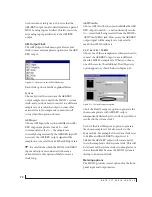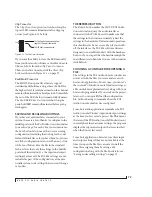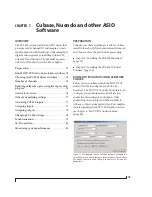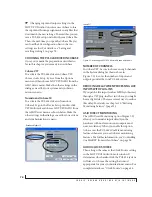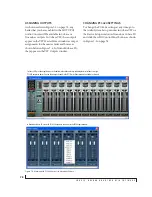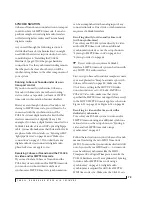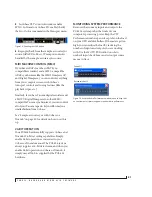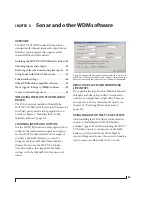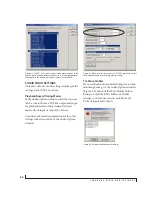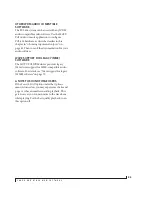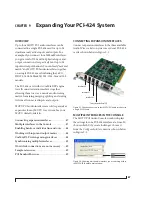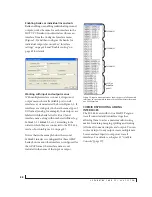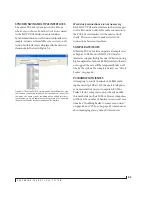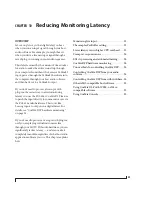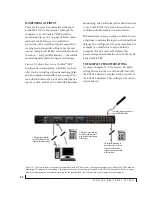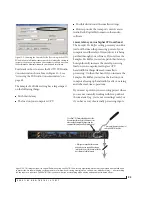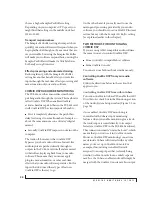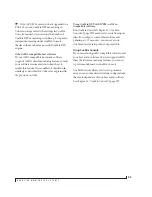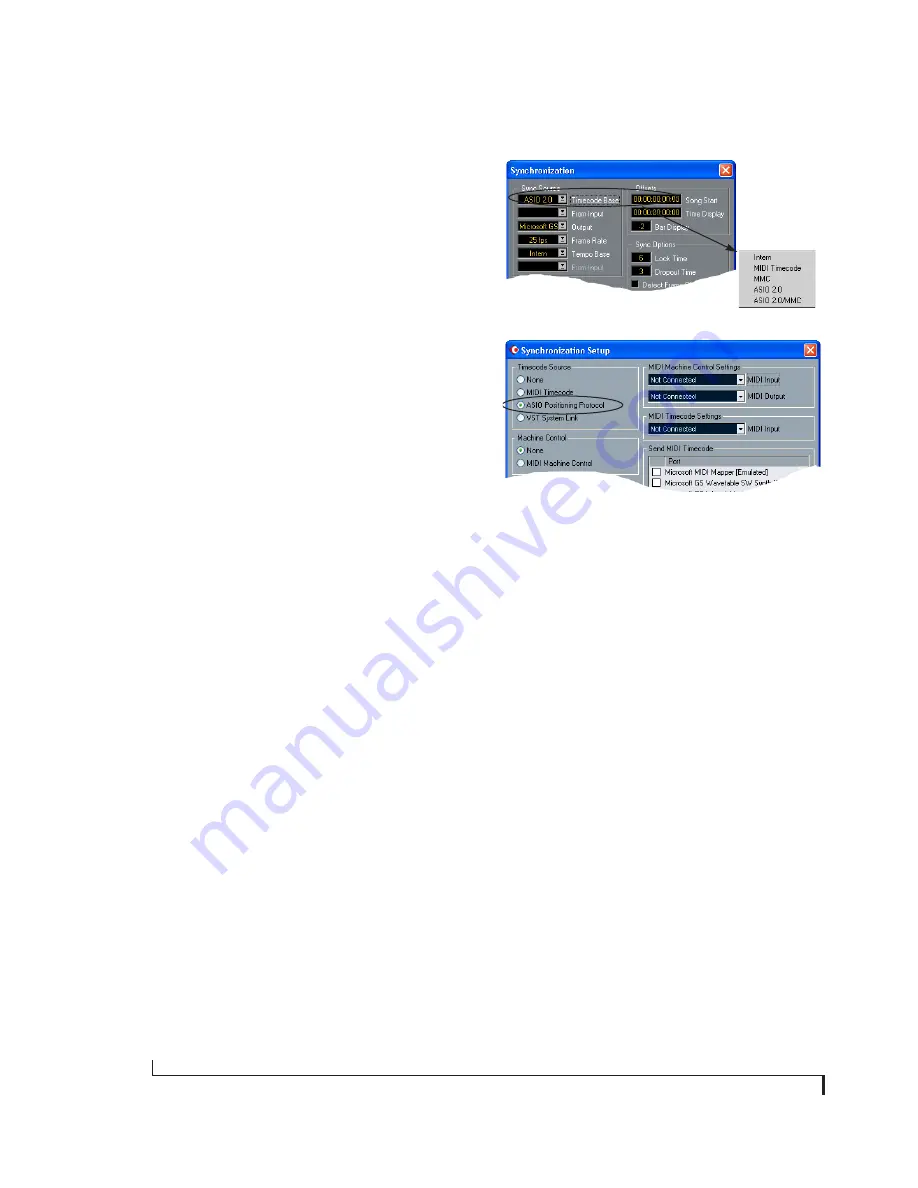
C U B A S E , N U E N D O A N D O T H E R A S I O S O F T W A R E
80
setting in the MOTU PCI Audio Console window
has the appropriate setting for locking the PCI-424
system to the synchronizer. For example, in
Figure 4-25 on page 45, word clock is being used to
resolve a 2408mk3 interface, so the Clock Source
setting is
2408mk3: Word Clock In
.
☛
If you have an ADAT sync or a Tascam sync
compatible device, don’t use SMPTE time code.
Instead, use sample-accurate sync as described in
the next section.
Sample-accurate sync with Cubase or Nuendo
Cubase and Nuendo, along with the PCI-424
system and its ASIO 2 driver, provide you with
sample-accurate transfers with ADATs and any
other devices that support standard ADAT sample
address (
ADAT Sync
).
Similarly, with the help of a MOTU Digital
Timepiece universal A/V synchronizer, Cubase (or
Nuendo) and a 2408mk3-based PCI-424 system
can perform sample-accurate transfers with
Tascam digital recorders.
A sample-accurate transfer is one in which the
original location of the audio is preserved in the
transfer, down to the sample.
For details on how to connect your hardware for
sample-accurate sync, see “Sample-accurate sync”
on page 39. Then, set up Cubase as follows:
1
Choose
PCI-424: ADAT
as the
Audio Clock
Source
setting. In Cubase VST, this setting is in the
Audio System Setup window (Audio menu). In
Nuendo or Cubase SX, this setting is in the Device
Setup window (Options menu).
2
Go to Cubase or Nuendo’s
Synchronization
window, as shown below:
Figure 7-7: Setting up sample-accurate sync via ASIO 2.
3
If you are
not
using an MMC-compatible
synchronizer (such as a MOTU MIDI
Timepiece AV, Digital Timepiece or Alesis BRC),
choose the settings shown above in Figure 7-7 that
applies to you. In this scenario, transport control is
handled by the ADAT (or other sample-accurate
sync source).
4
If you
are
using an MMC-compatible
synchronizer (such as a MOTU MIDI
Timepiece AV, Digital Timepiece or Alesis BRC),
set Cubase VST’s
Sync Source Timecode Base
to
ASIO 2.0 MMC
or enable Nuendo’s (or Cubase
SX’s)
MIDI Machine Control
option. In addition,
choose the appropriate MIDI port for the MMC
synchronizer from VST’s
Output
menu or Nuendo/
SX’s MIDI machine Control
MIDI Output
menu. If
you’re using a MIDI Timepiece AV, you can choose
any of its MIDI ports in this menu. Doing so makes
Cubase or Nuendo send the MMC control
messages to the MTP AV (or other MMC device).
In this scenario, transport control is handled by
Cubase or Nuendo itself.
Cubase VST
Nuendo or Cubase SX
Summary of Contents for PCI-424
Page 35: ...6 ...
Page 43: ...14 ...
Page 45: ...16 ...
Page 53: ...P A C K I N G L I S T A N D P C S Y S T E M R E Q U I R E M E N T S 24 ...
Page 83: ...I N S T A L L I N G T H E P C I 4 2 4 H A R D W A R E 54 ...
Page 103: ...M O T U P C I A U D I O C O N S O L E 74 ...
Page 111: ...C U B A S E N U E N D O A N D O T H E R A S I O S O F T W A R E 82 ...
Page 115: ...S O N A R A N D O T H E R W D M S O F T W A R E 86 ...
Page 119: ...E X P A N D I N G Y O U R P C I 4 2 4 S Y S T E M 90 ...
Page 125: ...R E D U C I N G M O N I T O R I N G L A T E N C Y 96 ...
Page 131: ...C U E M I X C O N S O L E 102 ...
Page 148: ...6 ...
Page 156: ...14 ...
Page 158: ...16 ...
Page 166: ...P A C K I N G L I S T A N D M A C I N T O S H S Y S T E M R E Q U I R E M E N T S 24 ...
Page 194: ...I N S T A L L I N G T H E P C I 4 2 4 H A R D W A R E 52 ...
Page 230: ...A U D I O D E S K 88 ...
Page 246: ...E X P A N D I N G Y O U R P C I 4 2 4 S Y S T E M 104 ...
Page 258: ...C U E M I X C O N S O L E 116 ...







